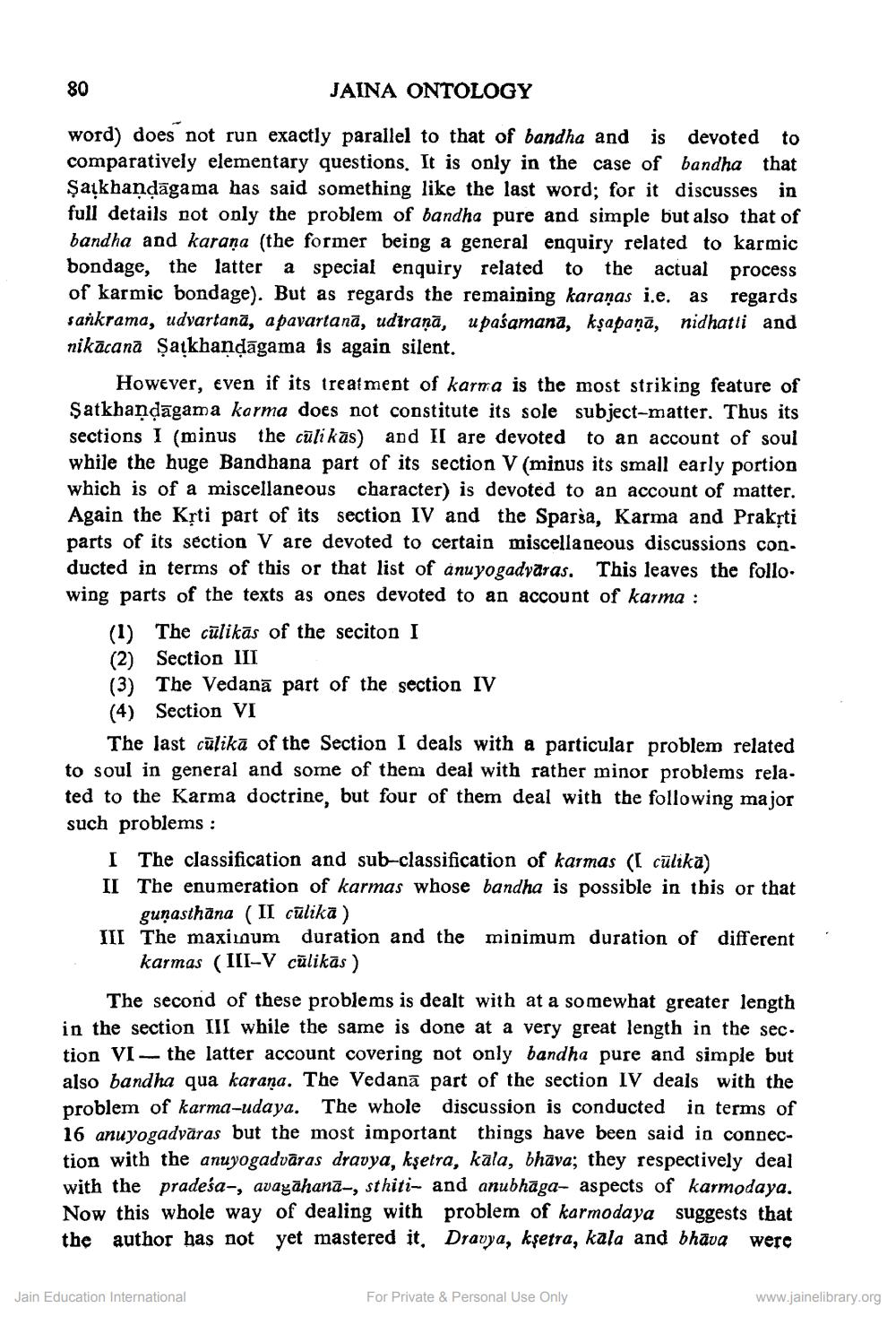________________
80
JAINA ONTOLOGY
word) does not run exactly parallel to that of bandha and is devoted to comparatively elementary questions. It is only in the case of bandha that Şakhandāgama has said something like the last word; for it discusses in full details not only the problem of bandha pure and simple but also that of bandha and karana (the former being a general enquiry related to karmic bondage, the latter a special enquiry related to the actual process of karmic bondage). But as regards the remaining karanas i.e. as regards sankrama, udvartanā, a pavartanā, udiraņā, upaśamana, kşapaņā, nidhatti and nikācana Şarkhandāgama is again silent.
However, even if its treatment of karma is the most striking feature of Satkhandagama karma does not constitute its sole subject-matter. Thus its
ns I (minus the cūli kas) and II are devoted to an account of soul while the huge Bandhana part of its section V (minus its small early portion which is of a miscellaneous character) is devoted to an account of matter. Again the Krti part of its section IV and the Sparsa, Karma and Prakrti parts of its section V are devoted to certain miscellaneous discussions con. ducted in terms of this or that list of anuyogadyāras. This leaves the follo. wing parts of the texts as ones devoted to an account of karma :
1) The cūlikās of the seciton I (2) Section III (3) The Vedanā part of the section IV (4) Section VI
The last cūlika of the Section I deals with a particular problem related to soul in general and some of them deal with rather minor problems rela. ted to the Karma doctrine, but four of them deal with the following major such problems :
I The classification and sub-classification of karmas (( cülika) II The enumeration of karmas whose bandha is possible in this or that
gunasthāna (II cūlika) III The maximum duration and the minimum duration of different.
karmas (III-V cũlikās)
The second of these problems is dealt with at a somewhat greater length in the section III while the same is done at a very great length in the sec. tion VI - the latter account covering not only bandha pure and simple but also bandha qua karana. The Vedanā part of the section IV deals with the problem of karma-udaya. The whole discussion is conducted in terms of 16 anuyogadvāras but the most important things have been said in connection with the anuyogadvāras dravya, kşetra, kala, bhāva; they respectively deal with the pradeśa-, avagahana-, sthiti- and anubhāga- aspects of karmodaya.
this whole way of dealing with problem of karmodaya suggests that the author has not yet mastered it. Dravya, kşetra, kala and bhāva were
Jain Education International
For Private & Personal Use Only
www.jainelibrary.org




